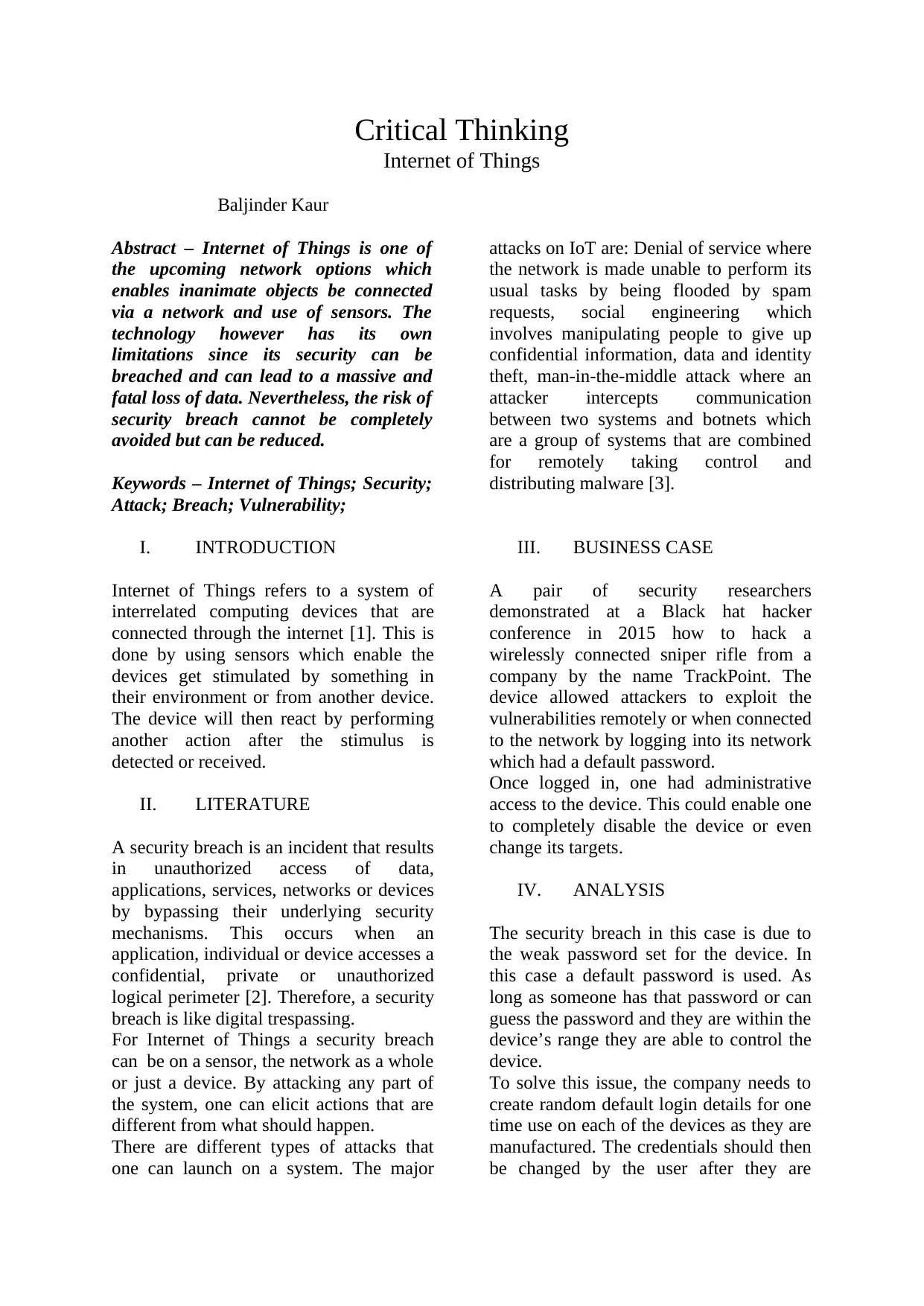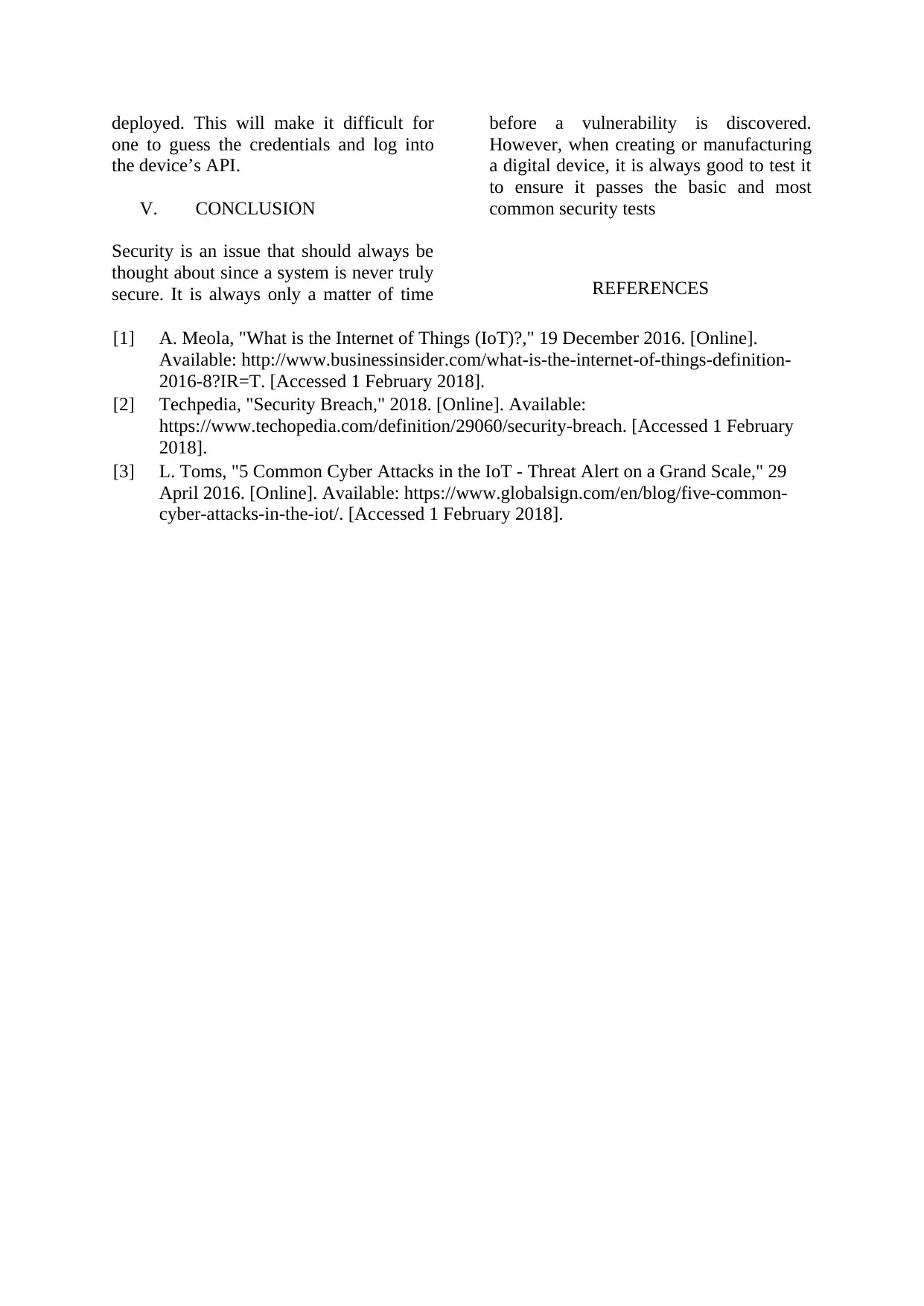Critical Analysis of IoT Security: Risks, Breaches, and Mitigation
VerifiedAdded on 2020/05/16
|2
|725
|35
Report
AI Summary
This report, focusing on the security aspects of the Internet of Things (IoT), begins with an abstract that introduces IoT as a network option connecting inanimate objects through sensors, while acknowledging security limitations. The report defines IoT and security breaches, detailing various attack types such as denial of service, social engineering, data theft, man-in-the-middle attacks, and botnets. A business case highlights a security breach in a wirelessly connected sniper rifle due to a default password vulnerability. The analysis emphasizes the need for stronger security measures, proposing the use of random, one-time-use default login details that users must change. The conclusion underscores the ongoing nature of security concerns and the importance of continuous testing and improvement in digital device manufacturing. The report references several sources to support its findings.
1 out of 2





![[object Object]](/_next/static/media/star-bottom.7253800d.svg)